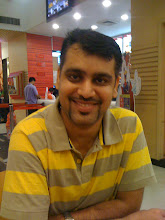Monday, 12 July, 2010
After braving jams at the Siri Fort crossing on the pilot BRT corridor, brace for similar trouble at the main Chirag Dilli intersection this week. The process of installation of intelligent signals at the crossing is nearing completion and after that it will be tested. During this time, motorists may get caught in long snarls, especially during peak hours.
According to sources, the dates for testing the signals at the intersection have been fixed for July 16 and 17. This crossing is one of the most problematic crossings on BRT corridor. During the testing, all data on traffic volumes for each arm of the busy intersection will be accessed by a computer attached to the signal poles.
"The idea is to arrive at a optimum signal cycle where stoppage time is minimum and traffic clears out at the fastest possible pace from all sides. The Intelligent Traffic Signals (ITS) software has been designed to give priority to BRT buses," said an official. The testing of signals needs to be done during peak hours so that all the new installations can be checked properly.
Chirag Dilli is the last of the seven crossings on BRT corridor to be fitted with ITS. This is done to test the system at the smaller intersections before the major ones are taken up. Ever since the trial runs began on the corridor two years ago, the crossing has been plagued with massive traffic snarls and stoppages lasting up to 30 minutes during peak hours. At present, the traffic police are handling the signals manually. They were unable to set a signal cycle for the crossing.
After the testing is complete on July 18, all the traffic signals on the operational part of the pilot BRT corridor would be fitted with ITS. "The signals will be linked to a centralized control room and we are expecting the system to be fully functional by August end. Trials for ITS are being carried out on a 5.8-km stretch on BRT corridor from Ambedkar Nagar to Moolchand. Later, we are planning to extend it to the rest of the corridor, up to Delhi Gate," said RK Verma, secretary cum commissioner, Transport department.
The extension of the scheme will be done in consultation with the traffic police as the rest of the intersections are being handled by the department. Officials are apprehensive about bringing in crossings, like ITO, under the system due to the sheer number of vehicles passing through these intersection.
ITS was proposed as a one-point solution to long queues of vehicles at intersections on the BRT corridor. The project has come after a delay of about two years. This is city's first tryst with intelligent signals, but commuters using the stretch still get caught in endless jams. The traffic police feel that by just treating the brief stretch is not going to help contain the congestion.
All the signals connected to the ITS program work in synchronization with each other and the signal cycle (green time given to each arm of the intersection) will be computed automatically by a computerized system.
Original news source http://timesofindia.indiatimes.com/City/Delhi/Signals-to-be-tested-in-BRT-brace-for-jams/articleshow/6157125.cms
Monday, July 12, 2010
Subscribe to:
Post Comments (Atom)




No comments:
Post a Comment